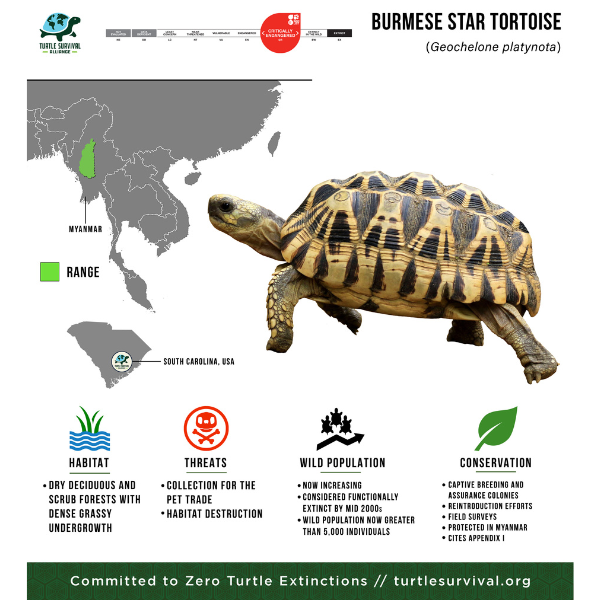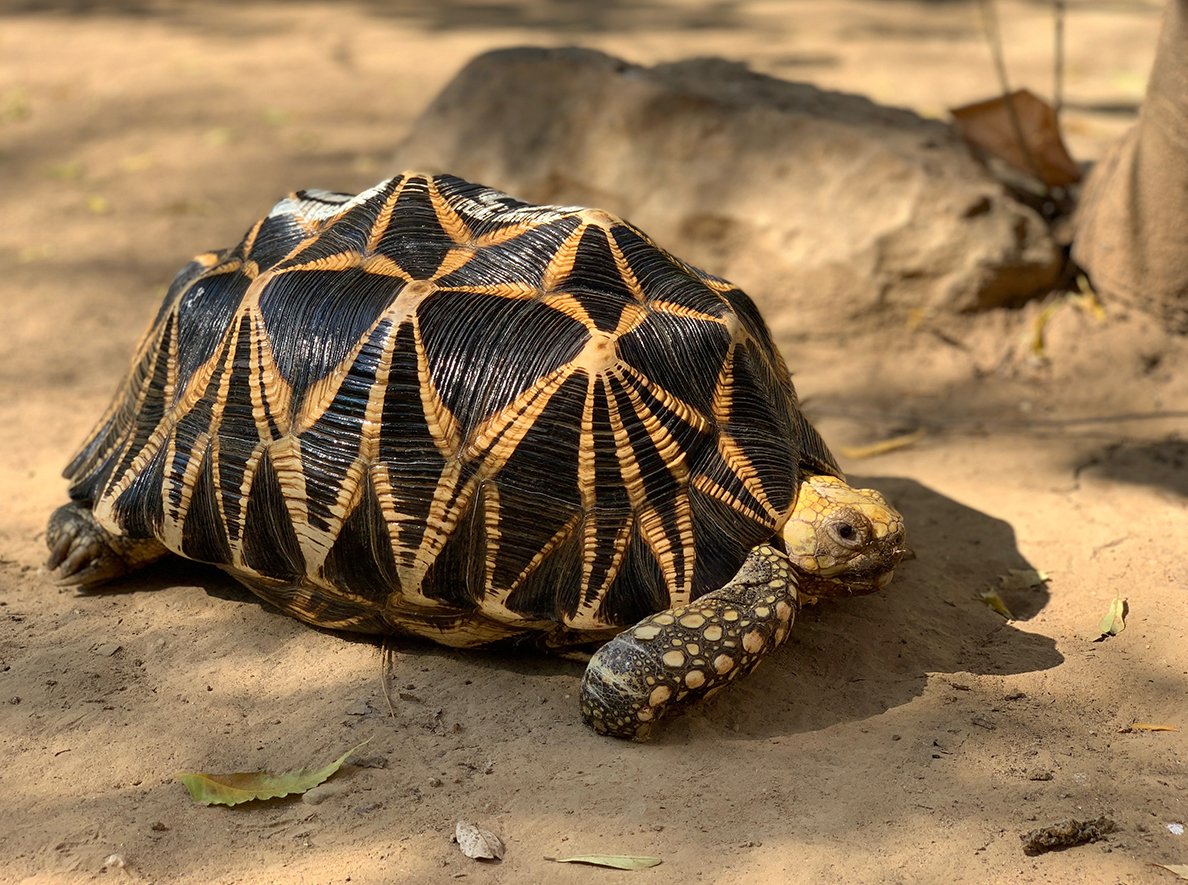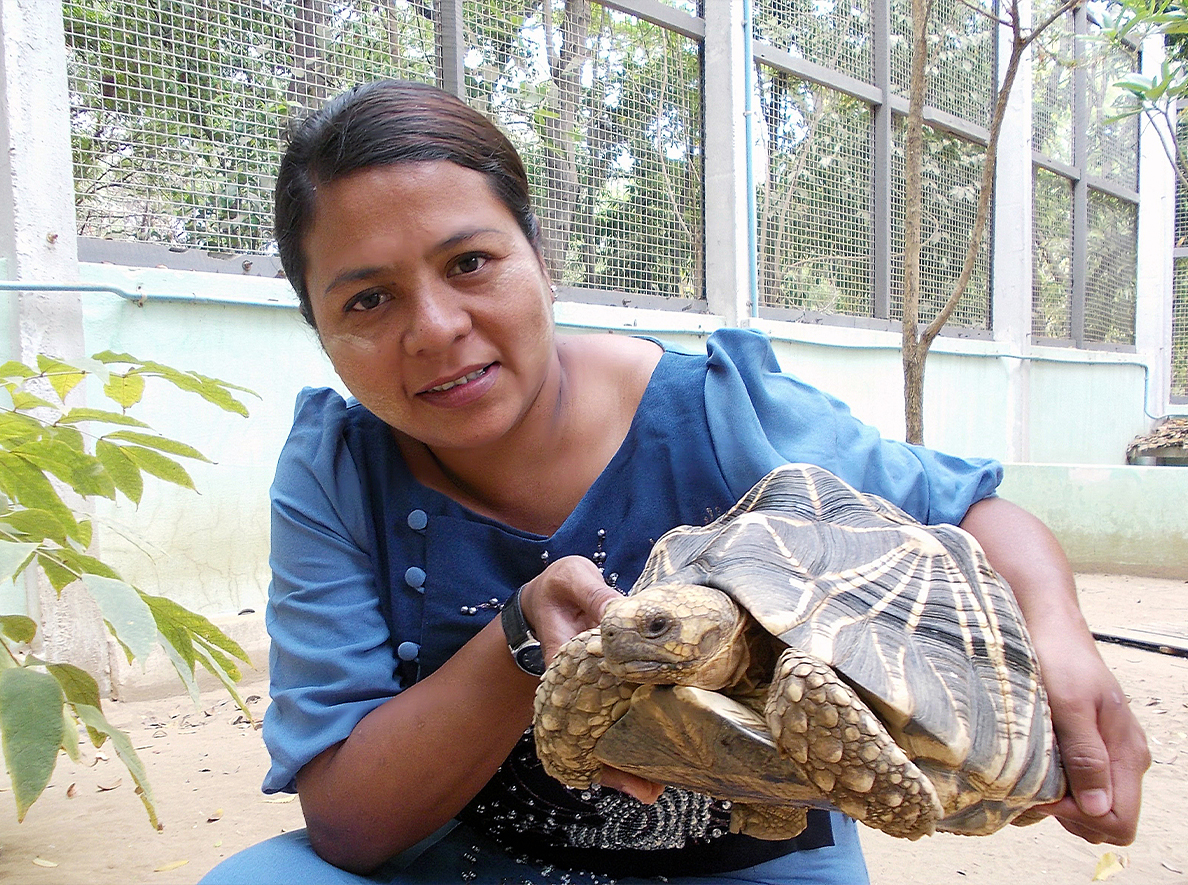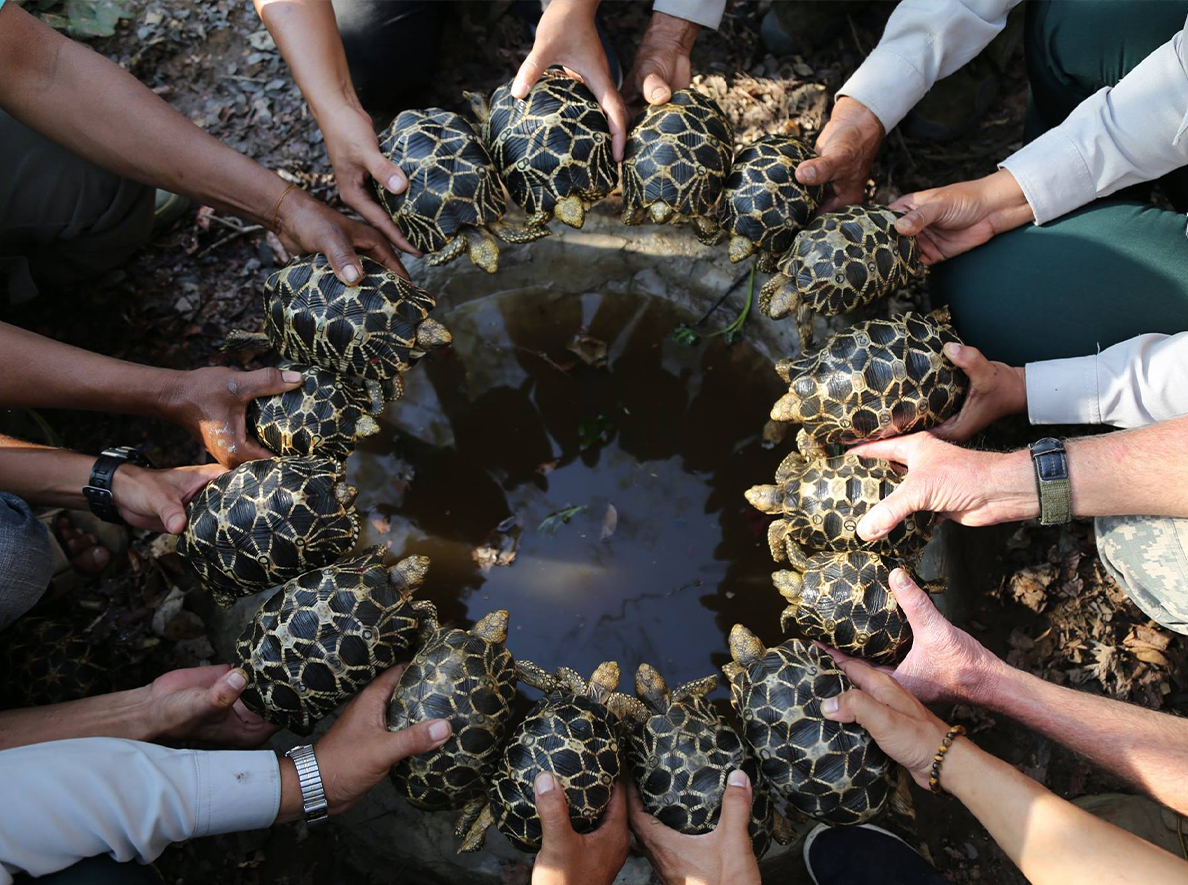In Myanmar, in the late 1990s, the Burmese Star Tortoise was on the brink of extinction. Avidly sought for the wildlife trade, and with relentless removal from the wild, within a decade this tortoise species had almost completely disappeared from its native habitat. By the mid-2000s, it was considered functionally extinct in the wild.
Today, more than 20,000 tortoises have hatched and nearly 5,000 have been released back into their native habitat.



